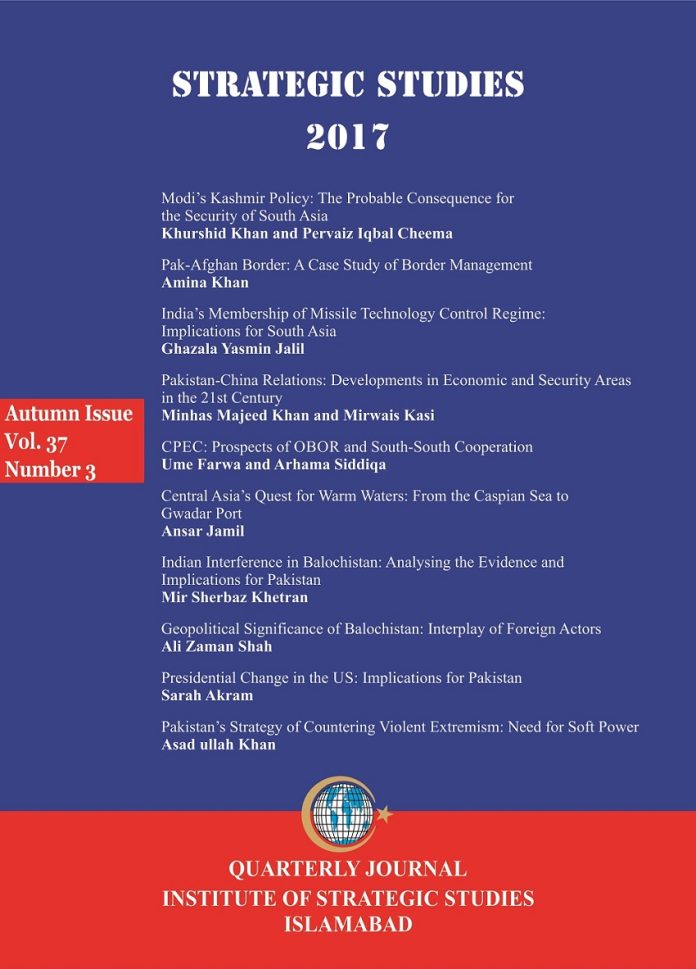Abstract
The geographical location of Balochistan makes it an important region. The province, being the best possible and the shortest route to the Arabian Sea, has attracted the key international and regional players, including China, India, the US, Iran, the Central Asian Republics (CARs) and Afghanistan. Each player wanted to utilise this region to pursue its geopolitical and geostrategic interests. The building of Gwadar port and the development of Balochistan under the China Pakistan Economic Corridor (CPEC) is going to be a game changer for Pakistan’s socio-economic development. A fully operational Gwadar port will enhance Pakistan’s commercial activities and its connectivity with oil-rich Gulf states, the CARs, Afghanistan, China and with the rest of the world. Therefore, CPEC, under the Chinese One Belt One Road (OBOR) initiative, has enhanced the significance of the Balochistan province. However, it has also added to the concern of the adversaries of Pakistan and China, particularly India and the US. To counter the viability of Gwadar, India has started to invest considerably in the development of the Iranian Chabahar port. Since China’s rivalry with the US and India’s with Pakistan has been a recurring theme in the global and regional politics respectively. It is Iran’s strategic partnership with India, which has been stirring doubts in Pakistan. The episode of arrest of the Indian spy, Kulbhushan Jhadav, has confirmed the involvement of India’s intelligence agency — Research and Analysis Wing (RAW) — and endorsed all other reports on the foreign involvement in supporting the insurgency in Balochistan. In this milieu, this study is an effort to factor in the foreign elements in the current instability in the province.













